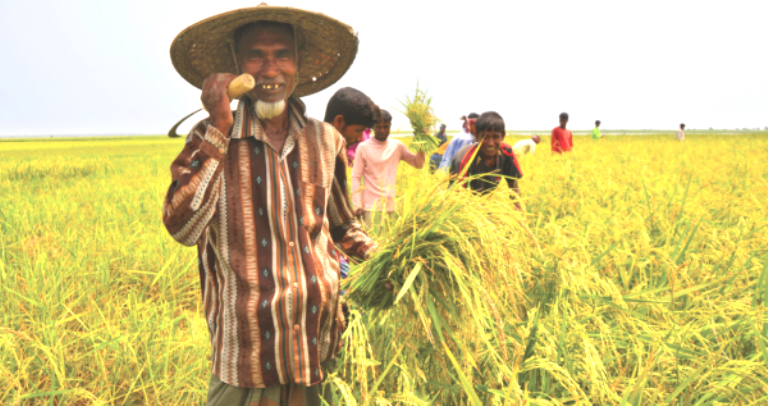
Bangladesh’s economic revolution
Majhar Mannan
Published:26 Mar 2021, 03:43 PM

Bangladesh’s economic revolution
Under the strong leadership of Bangabandhu Sheikh Mujibur Rahman, we got our cherished freedom. Bangabandhu and Bangladesh are inseparable. If Bangabandhu had not been born, Bangladesh would not have been born. The 50th year of independence and the birth centenary of Bangabandhu are undoubtedly a beacon of hope for the Bengali nation. Much of Bangabandhu’s dream of building a golden Bengal has come true today. Bangladesh is now on the verge of becoming a strong, developed and prosperous country. Bangladesh has already received the final recommendation of the United Nations for the transition from a least developed country to a developing country. This is a big milestone and a landmark event for Bangladesh.
Bangladesh is about to become a strong economic state. Bangladesh will be the 25th largest economy in the world by 2035 if the current economic growth continues. The Center for Economic and Business Research, a British economic research organization, has provided such information. According to the 2020 index, Bangladesh is now the 41st largest economy in the world.
According to the CEBR survey, Bangladesh’s economy will grow at a rate of 6.8 percent between 2021 and 2025. Bangladesh has surpassed South Asia in most of the economic and socio-economic indicators (10 out of 12) and it has surpassed low-income countries long ago. Today, Bangladesh is a milestone in terms of growth and poverty alleviation. Bangladesh today is a role model for women’s economic empowerment. In the nineties, 57 per cent of the people in the country lived below the poverty line. Today, the number of the poor is 20.5 per cent and the number of the extremely poor is below 10 per cent.
Bangladesh today is truly a milestone in some social indicators of development such as growth, inflation, per capita income, export remittances and foreign exchange reserves. According to the Bangladesh Bureau of Statistics survey, our GDP growth in the last fiscal year ended last June was 5.24 percent and per capita income stands at 2064 dollars. The New York Times columnist Nicholas urges inferior US President Biden to learn from Bangladesh on what to do to end poverty. The Wall Street Journal has praised Bangladesh’s economic growth.
Remittances play a huge role in the economy of developing countries around the world. However, due to last year’s coronavirus epidemic, most of the countries could not keep up with the previous remittance flow but Bangladesh is an exception. In 2020, the remittance flow in Bangladesh has increased compared to the previous year. According to the report of the organization, the remittance of Bangladesh in 2019 was 1840 crore dollars. In 2020, Bangladesh’s remittance was 1988 crore dollars. Last year, Bangladesh’s remittances increased by 8 percent. Immigrant workers sent 196 crore 26 lakh dollars remittances in January 2021 and that’s about 20 percent more than in January last year. Last January, immigrants sent 163 crore 84 lakh remittances. For the first time in the history of the country, foreign exchange reserves exceeded 43 billion dollars on December 30, 2020. Although Bangladesh is a small country on the world map, the speed of its economy is surprising the world day by day.
Bangladesh has managed to achieve comprehensive food security. For the last few years rice production has increased to 5 million metric tonnes. Bangladesh’s participation in UN peace keeping mission is also remarkable. Bangladesh ranks top among the 120 plus countries participating in UN peace mission. In some cases, Bangladesh has enviable success, such as ability to deal with natural disaster, self-sufficiency in food, modernization of land management, dealing with recession, settlement of maritime disputes, payment of freedom fighter allowance. According to a report of International Monetary Fund (IMF), Bangladesh’s per capita GDP in 2020 will be 1888 US dollars and that of India will be 1877 US dollars. In other words, Bangladesh is ahead of India in per capita GDP. The participation of woman in the labour force in Bangladesh is 32 percent and in India it is only 20.3 percent. Bangladesh is also advancing in some other social indicators such as health, sanitation, financial inclusion, women’s empowerment, etc.
For the first time, the government is going to set up a food processing industrial city to ensure fair prices for farmer’s production. This industrial city is to be set up on 50 acres of land in the northern city of Thakurgaon. The prime minister said, the government has taken initiative to create skilled manpower with the idea of the fourth industrial revolution.
Bangladesh is moving ahead in export sector and Bangladeshi medicines are being exported to 148 countries of the world. The main reason behind Bangladesh’s rapid economic growth is political stability and Sheikh Hasina’s great leadership.
* Assistant Professor of BAF Shaheen College Kurmitola Dhaka Cantonment.
According to the CEBR survey, Bangladesh’s economy will grow at a rate of 6.8 percent between 2021 and 2025